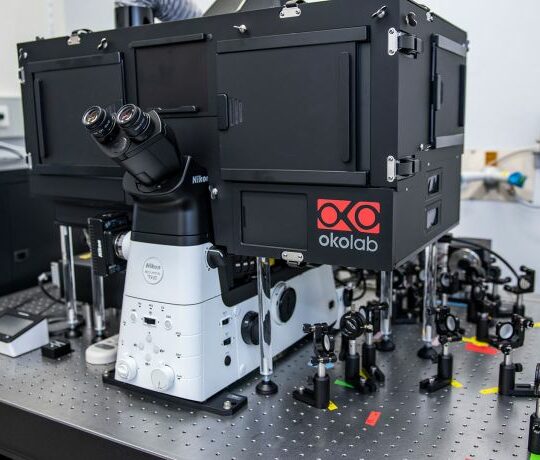The Nikon N-STORM is a single molecule localisation microscope that is capable of imaging in three-dimensions (3D) with resolutions approximately ten times better than conventional microscopy, typically ~20 nm in xy and ~50 nm in z. The system contains Mic-AO, an adaptive optics module to remove optical aberrations induced by thick samples.
The microscope is also capable of multi-colour, total internal reflection fluorescence (TIRF) and live cell imaging.
The system is compatible with standard slides, 35 mm dishes and 8-well chamber slides. It contains all necessary accessories for environmental control; CO2, humidity, and temperature control.
Staff at the Centre for Dynamic Imaging can provide expert guidance on the preparation of samples and choice of fluorophores.






